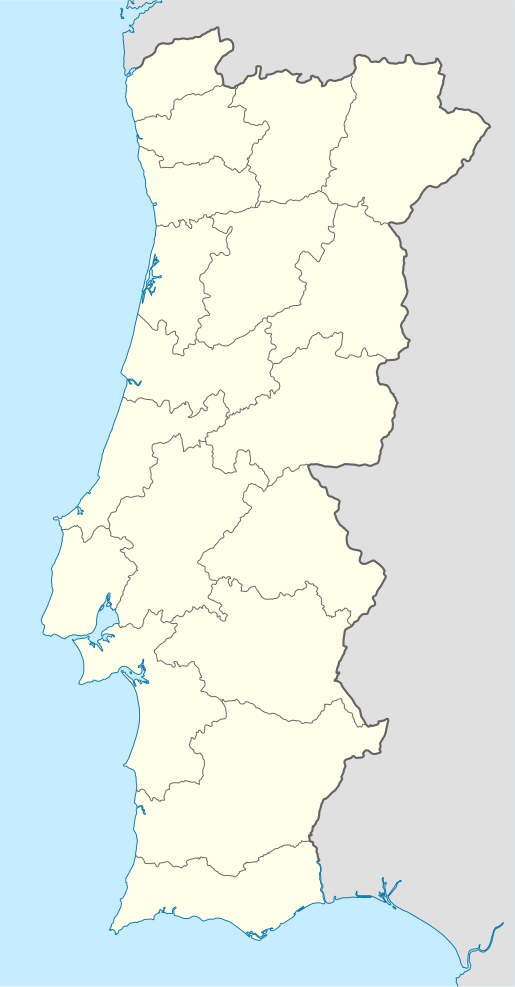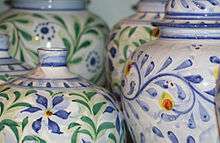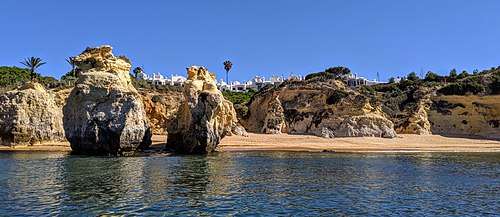Porches (Lagoa)
Porches is a civil parish/freguesia in the municipality of Lagoa in Portugal, about 10 km east of the city of Lagoa. The population in 2011 was 2,011,[1] in an area of 15.64 km².[2] It was elevated to the status of a town on July 12, 2001.
Porches | |
|---|---|
 Coat of arms | |
 Porches Location in Portugal | |
| Coordinates: 37.126°N 8.398°W | |
| Country | |
| Region | Algarve |
| Intermunic. comm. | Algarve |
| District | Faro |
| Municipality | Lagoa |
| Area | |
| • Total | 15.64 km2 (6.04 sq mi) |
| Population (2011) | |
| • Total | 2,011 |
| • Density | 130/km2 (330/sq mi) |
| Time zone | UTC±00:00 (WET) |
| • Summer (DST) | UTC+01:00 (WEST) |
| Postal code | 8400 |
History
Perched on a hill on the edge of the oldest east-west road in the Algarve is the small town of Porches. Vestiges of continuous occupation going back as far as the Neolithic Age have been found in the area of the freguesia. A menhir, found in this area and dated to sometime between 5000 and 4000 BC, is now in the entrance garden of the Convent of Saint Joseph in Lagoa.
According to historical sources, the actual settlement of Porches was in the middle of the 16th century, built by a group of settlers who came from an older urbanization called Porches Velho, situated within the freguesia but closer to the coast. Porches Velho had been occupied during the Roman period, and in 1253 it was already a sizeable town, seat of a judicial district and with a strong medieval castle.

The area of Porches is well known for its wine, but also for its clay pits and pottery workshops and its current inhabitants still make pottery, continuing to keep this art alive. Pottery had been re-introduced to the area when the artists Patrick Swift (who also designed the stations of the cross at Porches Church ) and Lima de Freitas set up Porches Pottery (Olaria Algarve) in 1968, which still produces handpainted pottery. With the increase in tourism the prosperity of the Porches pottery industry has returned, and both traditional designs and new artistic styles are produced.
The Atlantic coastal border of the Porches District is home to a thriving beach tourist industry, with numerous beaches and rocky areas with caves and arches.
Heritage Sites
- Fort of Our Lady of the Rock, also known as Porches castle, with its Marian shrine.
- Church of Our Lady of the Incarnation
See also
References
- Instituto Nacional de Estatística
- "Áreas das freguesias, concelhos, distritos e país". Archived from the original on 2018-11-05. Retrieved 2018-11-05.

